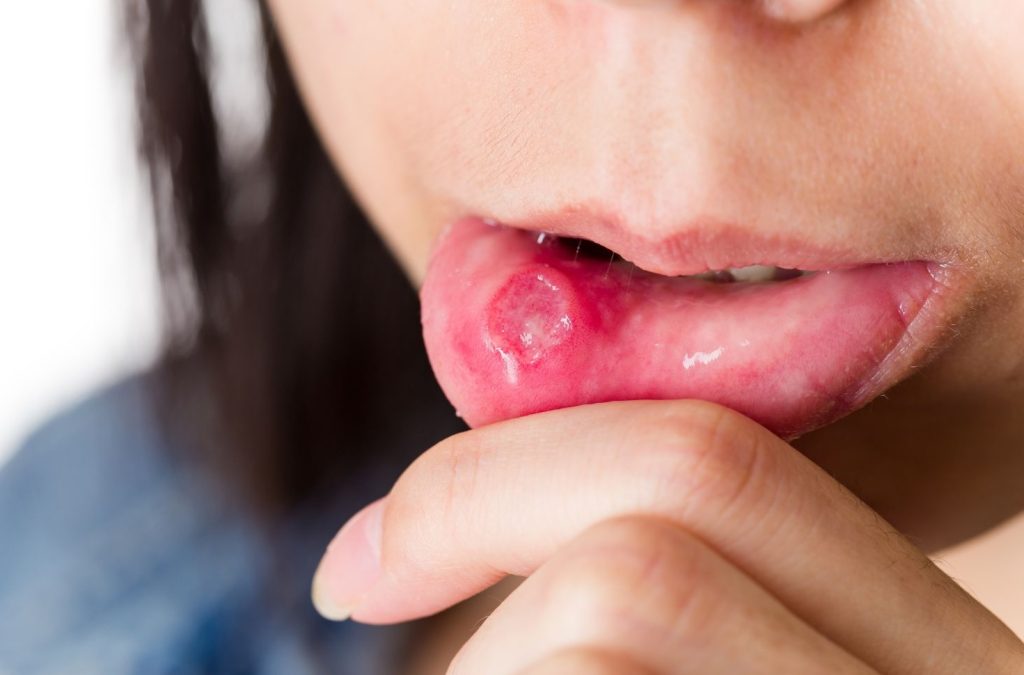Oral thrush is a common yeast infection in the mouth, usually caused by an overgrowth of Candida albicans. It’s more likely to affect people with weakened immune systems, those using antibiotics, denture wearers, or anyone with dry mouth or diabetes. Smoking, age, and other health conditions can also raise the risk.
While often mild, the symptoms can be uncomfortable, including soreness, creamy white patches, and changes in taste. Recognising oral thrush symptoms early makes it easier to treat and helps prevent it from spreading. This guide walks through what to look out for and when to seek help.
White Patches on the Tongue
One of the telltale signs of oral thrush is the appearance of soft, creamy white patches — usually on the tongue, but sometimes spreading to the inner cheeks, gums, or even the tonsils.
They can look a bit like cottage cheese and might feel slightly raised or velvety to the touch. Some people notice these patches wipe away quite easily, but underneath, they may leave behind red, irritated skin that feels sore or raw.
These sore mouth white patches might not cause any pain at first, but they can become uncomfortable if the infection spreads or if the skin beneath them becomes inflamed. If you notice that these patches keep returning — or they don’t go away after a few days — it could be time to consider a proper thrush mouth diagnosis.
Redness or Soreness Inside the Mouth

Not all oral thrush symptoms are visible right away. For some people, the first clue is a general soreness or burning feeling inside the mouth, often before any white patches show up.
This discomfort might stick around in one spot or spread across the cheeks, tongue, or roof of the mouth. In more stubborn cases, it can even reach the gums or throat, making everyday things like talking, eating, or brushing your teeth feel a bit more difficult.
While mild soreness might be easy to dismiss, especially if you’ve recently eaten something spicy or acidic, ongoing irritation could point to an underlying yeast infection in the mouth. If it doesn’t settle down quickly or keeps flaring up, it’s usually best to get it checked out.
Burning Sensation (Eating or Drinking)
For many people, oral thrush isn’t just about what they see — it’s what they feel. A burning sensation in the mouth, especially when eating hot, spicy, or salty foods, can be one of the more frustrating signs of oral thrush.
This stinging or tingling feeling might affect the tongue, the inside of the cheeks, or the roof of the mouth. In some cases, it can be strong enough to make eating uncomfortable, or even put people off food altogether for a while.
If you’ve noticed a sudden change in how your mouth reacts to food or drink, especially if it’s paired with other symptoms, it could be a clue that a yeast infection is developing. These kinds of candida symptoms in the mouth tend to build slowly, so spotting them early can make a big difference in getting prompt support.
Loss or Altered Taste
Another less obvious — but often frustrating — symptom of oral thrush is a change in how things taste. You might notice that your favourite foods seem bland, or that everything carries a strange, almost metallic or bitter aftertaste.
For some people, it’s not just a change — it’s a complete loss of taste, which can affect appetite and make meals less enjoyable. This tends to happen when the infection spreads across the tongue or palate, interfering with taste buds and moisture levels in the mouth.
It’s easy to dismiss altered taste as nothing serious, but when it’s paired with a sore mouth, white patches, or other oral thrush symptoms, it can point to something more specific. And while it usually clears up with treatment, if it lingers, a proper oral thrush consultation might be the next step.
Dry Mouth

Dry mouth might seem minor, but it can be an early sign of oral thrush. Saliva helps control bacteria and fungi, so when there’s less of it, Candida can grow more easily. You might feel a sticky sensation, a rough tongue, or constant thirst. This dryness can also make other symptoms, like soreness or white patches, feel worse. It often shows up in people taking certain medications or managing ongoing health conditions. If your mouth feels unusually dry and it’s not improving, especially with other signs of oral thrush, it’s worth speaking to a professional for guidance.
Difficulty Swallowing
When oral thrush moves beyond surface irritation, it can start to affect how you swallow — and that’s usually a sign the infection is getting worse.
You might feel like there’s something stuck in your throat, or notice discomfort when swallowing food, drinks, or even saliva. This is often because the infection has spread further down into the throat or oesophagus, where it causes inflammation and pain.
Difficulty swallowing isn’t always severe, but if it suddenly appears, especially with other oral thrush symptoms like soreness, burning, or taste changes, it’s something to take seriously. In these cases, getting a professional thrush mouth diagnosis is the safest way forward, particularly for people already managing other health conditions.
Painful Ulcers
While not exclusive to oral thrush, ulcers can appear when the infection becomes more irritating or widespread. These small, round sores may feel sore or sting — especially when eating or brushing. Unlike typical mouth ulcers, thrush-related ones often appear alongside white patches, redness, or dry mouth, and might take longer to heal. They can show up in less usual areas, like under dentures or at the back of the throat. If ulcers keep returning or come with other candida symptoms in the mouth, it may be time to consider an oral thrush consultation for clearer answers.
Oral thrush can show up in different ways — from white patches on the tongue and burning sensations to more subtle signs like a dry mouth or altered taste. Knowing what to look for can make it easier to catch early, especially if you’re in a higher-risk group or already managing another health condition.
Milder symptoms often go away on their own, but if things persist, get worse, or begin to interfere with eating, talking, or swallowing, it’s best not to wait it out. You can explore oral thrush treatment options online, or speak to a professional for advice that fits your situation.


